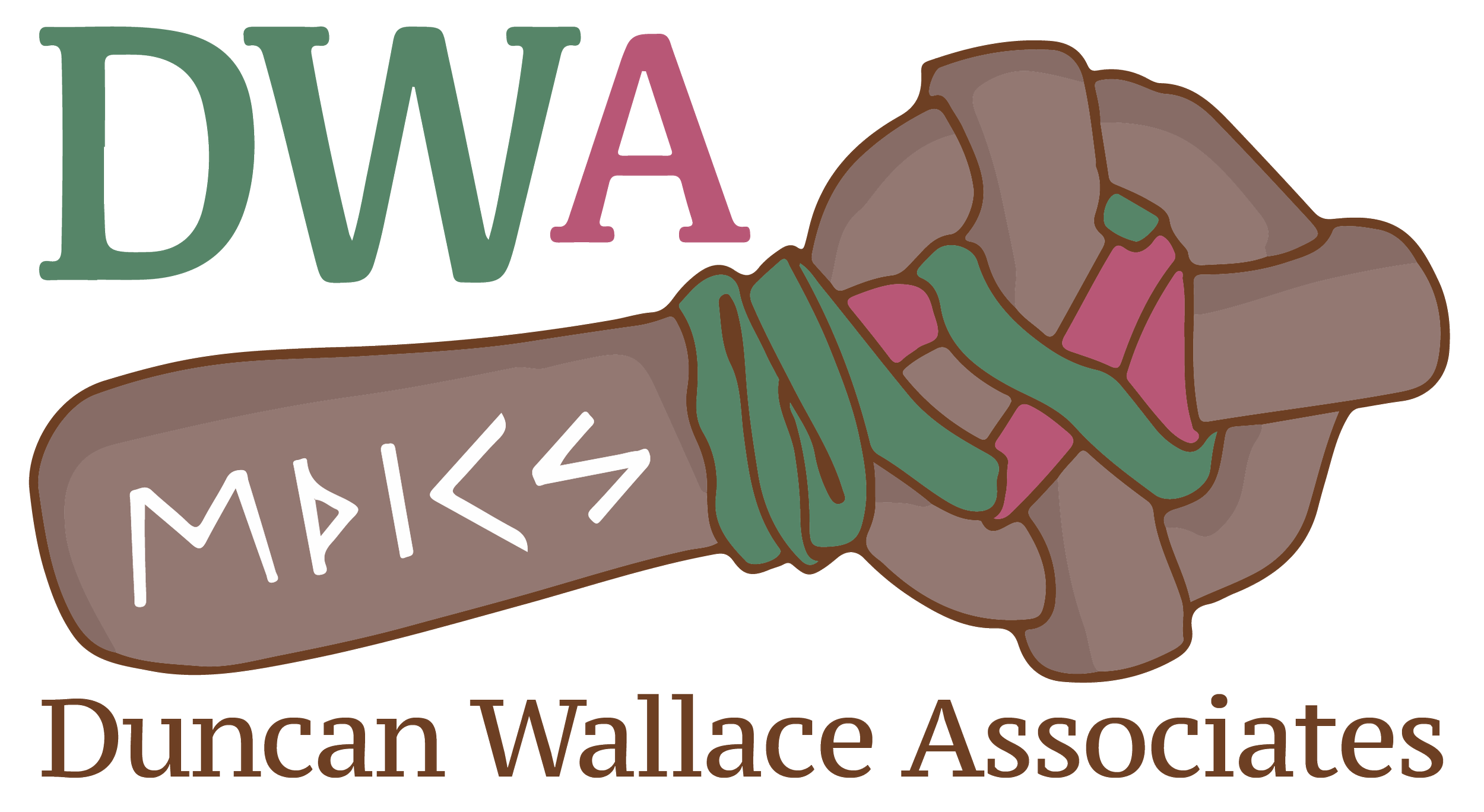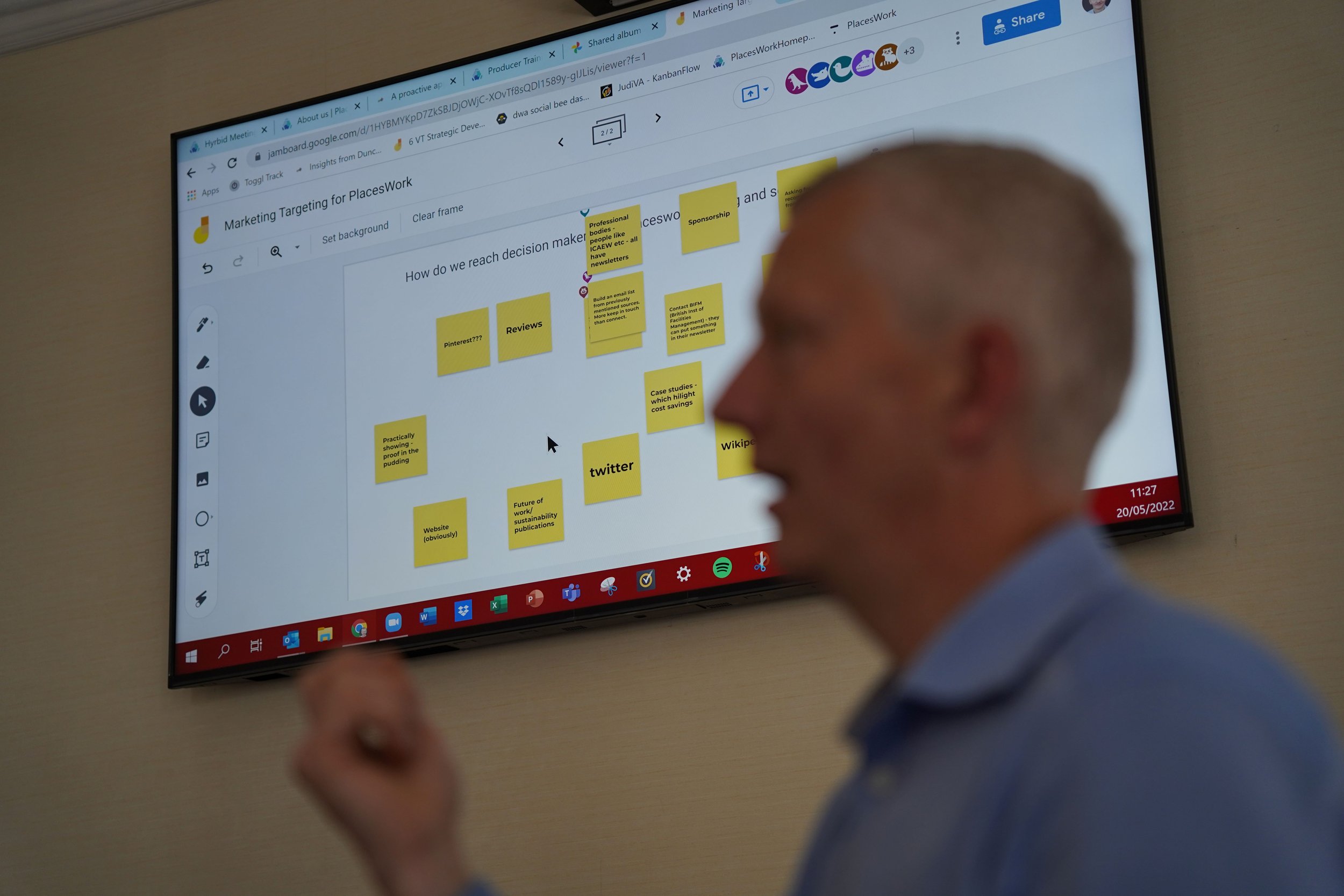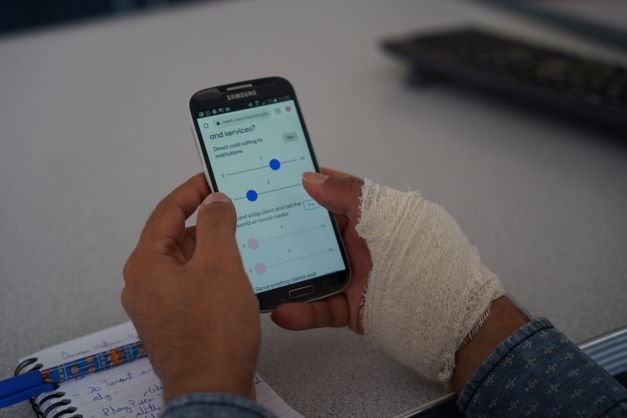Tactics and Tips from Institute of Directors Members about Chairing Hybrid Meetings
This blog reflects the wisdom, experiences and insights from Directors of many companies that we have been in conversation with through the Institute of Directors.
In August 2022 we led a workshop for IoD members across Britain called ‘Tactics and Tips for Chairing Board and Senior Management Leadership Meetings’. The workshop got completely booked out with all sorts of leaders from different industries. I (Duncan Wallace) co-led the workshop with Neena Mahal, who is a well known Chair in public life from her time as Chair of NHS Lanarkshire and Ruby Sweeney, Founder of The Events Hub who leads the way in hybrid conferences and events.
I myself, tend to work out of the IoD Edinburgh office each Thursday.
In this blog I share the insights from these conversations. This includes the wisdom about what is going on across all types of businesses and, the experiences of how hybrid meetings are going. Finally, there are tips for how to Chair very important decision based hybrid meetings.
What Institute of Director members are saying in these conversations.
Common problems experienced by Industry Leaders in hybrid meetings in Aug 2022
Leaders of industry are clearly saying that, actually, there are many issues that come to light with hybrid working. The challenges around hybrid working patterns are all being negotiated by leadership and HR departments. Yet, the day-to-day reality is that they are also experiencing a range of problems in hybrid meetings. However there is no disagreement that hybrid working patterns are here to stay.
We know that hybrid working is a long-term trend that is unstoppable. We can also see from the major surveys of 2022 (e.g. Deloitte’s Global Workforce Survey this summer), that there are many staff who aren't being given the choice of hybrid working. In the workshop and conversations with my peer IoD members, we agree with Deloitte that there's a gap in leadership about welcoming this inevitable trend of hybrid working. In fact, statistically, the gap analysis shows large quantities of talented Generation Z people are not happy with their employers not offering hybrid working. Which is quite a big leadership gaff, considering how difficult it is right now to recruit and retain staff in the current climate of ‘the great resignation’.
Now IoD leaders are becoming focused on the practical implications of so diverse hybrid working patterns - including hybrid meetings. So, learning how to do hybrid meetings well is an essential business competence. Hybrid meetings are where some people are in a room or rooms together, whilst other meeting participants are remote. See our video here.
This means leaders know they need to set a competent example of how to run these new types of meetings.
Top IoD Chairing Tactic 1 - Setting the Tone of Hybrid Meetings
Accepting that board members, senior staff and partners will want (and expect) a choice about whether they are joining the meeting remotely or coming into an office is a cultural issue that leaders are handling. There are strategic choices and messages that leaders need to give about what the expectation is for different types of meetings. Leaders need to set the tone of why coming in to the office for certain meetings is preferred, and increasingly will need to explain the benefits. It is also true that with board meetings and senior partnership meetings, leaders may have to justify why they haven’t set it up with a hybrid option.
Leaders are recognising that hybrid meetings can also support diversity and inclusion. A wider range of people are being enabled to contribute their skills and ideas as part of the workforce when previously, circumstances may have prevented their participation.
It is about setting the tone of expectation and reasoning is important. Here you can see that the Institute of Directors are right that it is a leadership of culture issue. Members of the IoD understand that leadership will create followership. The more board members, staff and partners see you handling hybrid meetings as a well-planned, thought through and natural option, the more people will learn how to do hybrid working patterns well.
The more leaders become competent at this new meeting format; the more confident others will be that their hybrid working patterns are being respected.
Top Tactic 2 From Conversations with IoD members – Etiquette
Leaders of the Institute of Directors know that good chairing is often about setting the etiquette. In the conversations with IoD members, they said that it will be crucial to set an inclusive, business-like tone, where meetings are even better planned and run as everyone gets used to the hybrid format.
In fact, the Chair and those Chairing important meetings have the most important role in setting up and maintaining high standards of etiquette in the way meetings are conducted.
Interview with Ian Bruce - Acting Ethical Standards Commissioner for Scotland - Etiquette
In this video with Ian Bruce (Acting Ethical Standards Commissioner for Scotland), you can hear him discuss the importance of etiquette in setting the tone for meetings. This video is one of a series of interviews we conducted as part of the research we have been doing in creating the accredited training courses in hybrid working and hybrid meetings practices.
Etiquette is set by the leader, the Chair of the meeting. Etiquette includes whether the rule is to raise our hands electronically or are we going to just interrupt the Chair on items at the meeting? Chairs need to work this out in the culture of their meetings, because for some items where you want free flowing discussion, you would not people putting their hand up electronically and then unmuting. Whereas in other meetings, you might want to have a more controlled way of discussion. Ultimately, you want you meetings to feel natural to participants. And although we seemed to have got used to online meetings very quickly, getting hybrid meetings to feel natural will be the next challenge we will need to get skilled up in. Like many aspects of change, it starts with leadership and therefore those Chairing have to be confident that the audio will work and that you will notice the body language of people wanting to say something.
Chairing a discussion with post it notes
Collecting opinions using MentiMeter Ranking to hear what everyone thinks in discussions.
It may be that you have prepared a decision-making tool getting folk to do ranking, so that you can hear from all perspectives. Or you might want a very collaborative atmosphere, such as a Post-It note exercise, where participants type in their thoughts and organise them together. These too are matters of setting out the etiquette. For example the Chair needs to say at that point: ‘Could people just type in their thoughts for a moment and we'll see how that spreads out on our shared screen’. Etiquette is not just about the logistics of running a meeting but how you chair a meeting to keep participants engaged and feel included.
Tactic 3: Chairing Senior Leadership Meetings using Tools.
Use shared software to help support discussions and decisions. Institute of Director members said they love Survey Monkey, Zoom polls, and Mentimeter, and it is easy to prepare for a decision in the same way as you prepare your agenda for your senior leadership meeting, a quick poll or a quick Post It note exercise using Mentimeter or Jamboard, meaning that people can type their thoughts in while other people talk, so that people do not have to wait until it is their turn to talk.
Using Phone to participate in decision making
Therefore, you have democratised the environment, and you enabled people to share and work well remotely, who may be struggling with the screen for all sorts of reasons - they might be wanting less screen time, they might be sitting down to a meal while attending the board meeting (hopefully not), but you know what I mean.
The openness and honesty of the Institute of Director members in our workshop was really striking about how culture has pivoted now that we are also inside people's homes.
For More Top Tips - Newsletter
For other top tips, you can subscribe to my PlacesWork newsletter. To find out what I have found insightful and useful to watch on social media about the Institute of Director’s Top Tips for Leadership of hybrid meetings.
We are doing monthly updates about hybrid working, from external sources and what we are learning, together with offers and articles, so you can keep up with all things hybrid as we transition (except for cars!). Click here to join our mailing list
A final word about the Conversations with Institute of Director Members
Institute of Director members throughout this period have been very frank with me because I am regularly there on Thursdays in the Scottish branch in Edinburgh (come along to the branch to meet me in person).
They have been open about the leadership difficulties of the rising fuel costs and the cost-of-living rise, the strikes, the unhappiness with UK-wide leadership at the moment and the way that that is affecting the industry, and then the Ukraine crisis on top of that, it is a difficult time in business.
They see all this heading into winter 2022/23 as a real pressure point, creating hybrid working and hybrid meetings to be a key win win. Help your staff cut your fuel bill, cut your meeting bill, cut your venue bill and enable good meeting staff and now. That is the final message from the Institute of Directors members. And I find that fascinating - it has so much wisdom in it.
Catherine McWilliam
I am also delighted that Catherine McWilliam has recently been appointed as the next Nations Director for Scottish leadership of IoD, as I knew Catherine in the amazing work she did at the Community Development Trusts Association across Scotland. Her appointment also follows on from the great leadership of Louise McDonald OBE FRSE who was asked to head up what Scottish Government is doing about the Economy.
In specific response to the industry leaders we worked with at the August workshop, we wrote a specific Frequently Asked Questions document. You can down load it via the button here.
Help from PlacesWork on how to Run Hybrid Meetings Well
What can we do about this? Well, as an institute member, I have got ahead of the curve and founded this whole PlacesWork business that supports any business with training, consultancy, and coaching around how to do hybrid working well.
My training courses take the strain off all your staff and, all types of staff to enable them to learn about these tactics, tips, protocols, systems, even the tech that you need in your rooms to do hybrid meetings well, including the camera angles and the audio equipment.
I am now doing this with multiple companies, as you will find out by subscribing to my newsletter and looking around my website.





